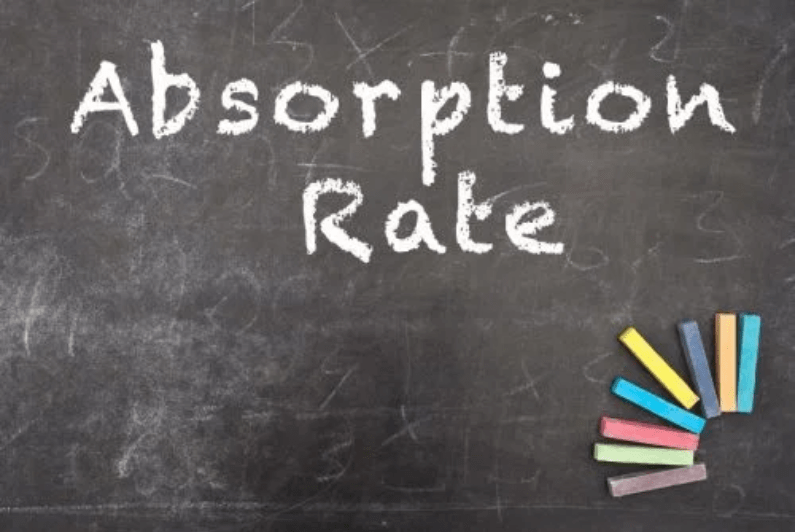Absorption, or the absorption rate, is a key metric in Commercial Real Estate (CRE). It measures the difference between the amount of space vacated by tenants and the space that gets leased or sold within the same time frame and locality.
Simply put, absorption is the rate at which commercial space is “absorbed” (leased or sold) over a given period in a specific market. This rate can be either positive or negative, depending on market conditions.
Absorption and Vacancy: A Close Relationship
Two important metrics often go hand-in-hand in CRE: absorption and vacancy. Vacancy refers to the percentage or number of units or square feet that are available in a commercial property. A lower vacancy rate usually means higher rental income for the property. Both vacancy and absorption rates play a crucial role for investors when deciding whether to buy, hold, or sell commercial properties.
Gross Absorption vs. Net Absorption
When discussing absorption rates, it’s essential to differentiate between gross absorption and net absorption.
- Gross Absorption refers to the total amount of space tenants move into within a specific period, without considering the amount of space vacated.
- Net Absorption measures the total amount of space leased, subtracting any space vacated in the same period. This metric is particularly important because it helps investors understand market supply and demand trends.
Focusing on Net Absorption
Since net absorption is the metric most frequently used by commercial real estate investors, it’s vital to understand its implications. Positive absorption means more space is being occupied than vacated, often leading to increased rental rates. Negative absorption, on the other hand, indicates that more space is being vacated than occupied, which can result in lower rent rates as landlords compete to fill vacancies.
Knowing the net absorption rate in a specific area allows investors to forecast cash flow and make informed decisions about their properties.
How to Calculate Net Absorption and Vacancy Rates
Absorption and vacancy rates are often calculated together. For example, let’s assume a commercial property has 24,500 square feet of leasable space, and 2,250 square feet are available across five units.
Vacancy rate is calculated as:
2,250 SF (vacant space) ÷ 24,500 SF (total leasable space) = 9.2% (vacancy rate)
If a new tenant leases 1,200 square feet, the vacancy rate changes:
2,250 SF (vacant space) - 1,200 SF (leased space) ÷ 24,500 SF = 4.3% (new vacancy rate)
This leaves 1,050 square feet vacant, creating an annual net absorption rate of 53.3%:
1,200 SF (leased) ÷ 2,250 SF (available space) = 53.3% (net absorption rate)
Thus, this scenario shows a positive net absorption rate over the year.
Factors That Influence Net Absorption
Several factors can impact net absorption, and understanding these can help investors make informed decisions.
1. Availability
Availability of commercial space in the area plays a significant role. In regions with limited availability, new businesses quickly fill the vacant spaces, resulting in a high net absorption rate. Conversely, in areas with abundant available space, the net absorption rate tends to be lower due to competition among properties.
2. Pricing
Rent rates also influence net absorption. Tenants look for spaces that meet their needs at affordable rates. By pricing your property competitively, you can attract tenants and reduce vacancy rates, leading to a higher net absorption rate.
3. Economic Conditions
The broader economic environment significantly impacts absorption rates. For example, during the COVID-19 pandemic, many businesses either shut down or moved to remote work, resulting in vacated commercial spaces. This shift led to lower absorption rates as companies sought smaller spaces to reduce costs. Economic shifts like these can dramatically affect market absorption trends.
The Bottom Line
Commercial real estate is a competitive market, and understanding metrics like net absorption can be a game-changer for investors. By gathering data, analyzing trends, and factoring in market conditions, you can make more informed decisions that drive the success of your investments.
Need assistance with your 1031 Exchange or DST? We’ve got you covered!
We’ve prepared a comprehensive, free e-book designed to guide you in achieving your long-term business goals or acquiring that dream property you’ve been eyeing.
Meet The LeveragedCRE Investment Team
Phill Tomlinson and Eric Butler are seasoned commercial real estate brokers with over 44 years of combined experience. They lead the LeveragedCRE Investment Team at Commercial Properties, Inc. (CPI) in Scottsdale, Arizona, specializing in investment sales and tenant/landlord representation across the Phoenix and Scottsdale submarkets.
The team leverages their extensive knowledge and expertise to help investors and property owners maximize their returns and navigate complex real estate transactions with confidence.
Stay informed with the latest in Commercial Real Estate strategies designed to enhance your income property investment results by bookmarking www.leveragedcre.com. Let us help you stay ahead in the market!


